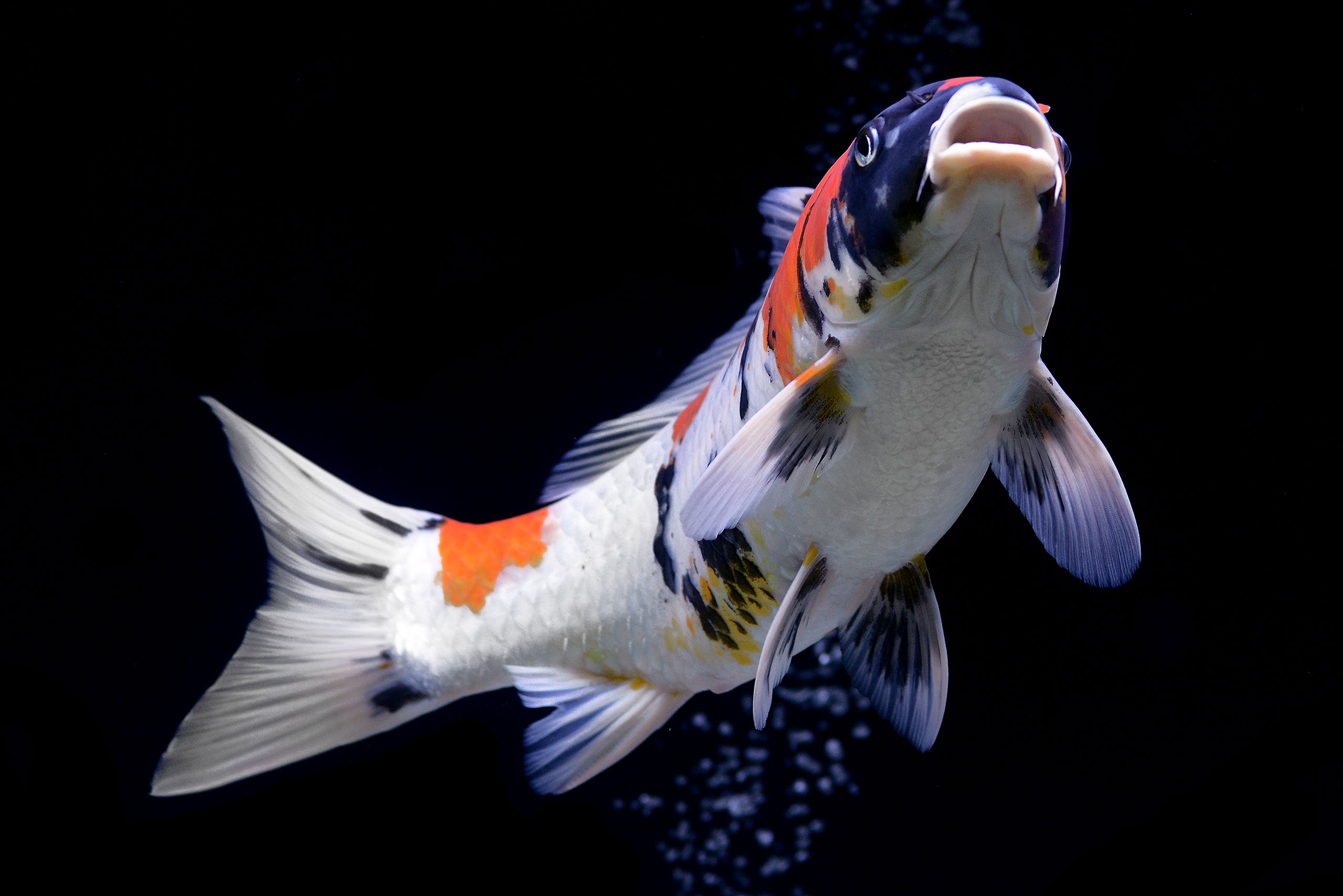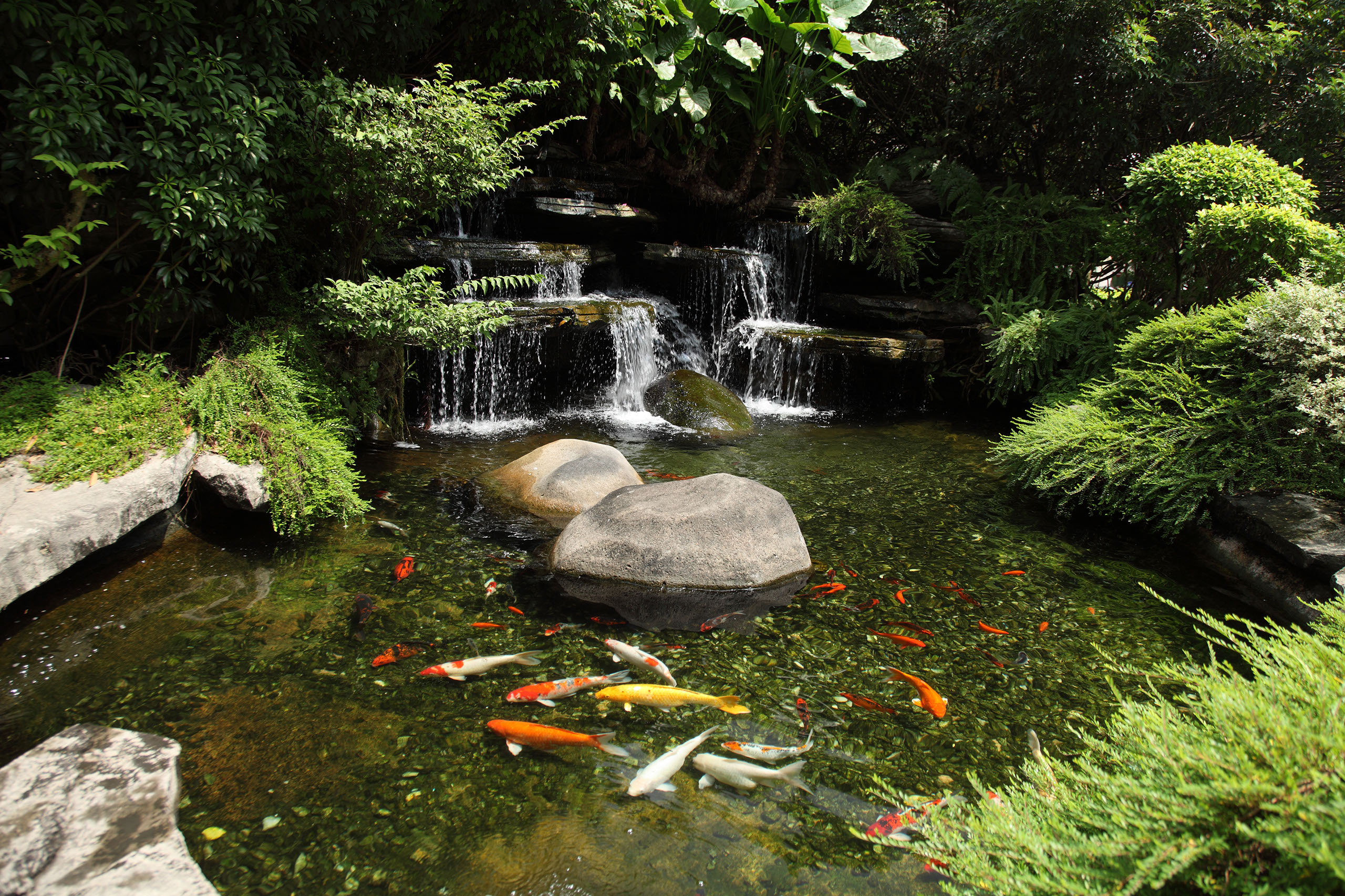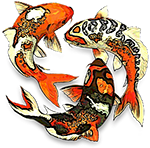Rapid Chilling Stress Tips for Koi and Goldfish
Ray Jordan, TKFGS
We are experiencing record cold temps in S. Texas this winter. My pond water temperature has dropped as low as 46F which is seven degrees colder than I have ever seen in ten year old pond. As I write this month’s newsletter my pond temperature is 52F. It has been as warm as 58F within the past week. These types of bouncing temps are stressful to our koi. My koi will swim slowly around most of the time when temps are above 50F but rest on the bottom sitting upright at times and most of the time when temps drops below 50F. I have received some emails and phone calls from area koi keepers worried about their koi/goldfish with these very cold temperatures. Some hobbyists have seen pond temps drop down to the mid 30’s especially those with smaller and shallow ponds.
The biggest risk is actually not the koi/goldfish in a pond with circulating water but the danger of pond/filter pipes freezing, bursting and then draining their ponds. As long as all pipes have water circulating 24/7 everything should be fine. However, since we are experiencing some power brownouts in our area consider that if your electricity is interrupted for a few hours non circulating water in non-insulated pipes can quickly freeze and burst your plumbing or filters. When the power comes back on depending on your pond/filter system design the pond could have most of the water leak or pumped out. So it is critical to install thick insulation on any exposed pipes or filter systems.
Water temperature is the engine that drives everything happening in our ponds and in our fish. Bacterial bio-filtration in our filters and metabolism in our koi slow drastically as temperatures drop below 50F and just barely creep along at temps below 40F. This is why we suggest you should stop feeding your fish when water temperature drops below 50-55F. Below this temperature there is more potential harm from feeding your fish from the negative impact on water quality than the minimal amount of nutrition they can absorb at this low temperature. Below 50F it is common to see most of our fish sitting on the bottom of our ponds in an upright position much of the time. This is their method of conserving energy and a normal reaction to cold water temperatures. It is very important to allow them to remain in stasis and not stimulate them.
Poking fish with a net to see if they are OK is highly stressful and can result in serious damage. If they are startled and disoriented they can swim into the sides of your pond and injury themselves. Throwing food into the pond to see if they are hungry will only pollute their environment causing even more stress. Some fish might actually swim over and eat a few pellets but they have spent some of their much needed stored energy supply. Remember they cannot really obtain any significant nutrition/energy at this temperature so the food just passes through undigested. The fish is left more stressed and challenged by the cold that if we had not tried to feed them.
If we experience some days with warmer water temperatures over 55F and you feel it necessary to feed your fish please feed very sparingly. I am talking a pellet or two per fish and feed no more than every second or third day. Even better resist the urge and do not feed until at least the beginning of March unless we have two weeks of 55F or warmer water temperatures before then. My experience indicates that regular goldfish such as comets are approximately as hardy as koi regarding cold temperature. However, fancy goldfish are much less hardy than koi regarding colder temperatures and should be more protected by bringing them inside for the winter or placing them in a covered or heated tank outdoors.
We have colder than normal temperatures forecast for our area for the rest of the winter. No doubt in S. Texas we will also see some periods of warmer temperatures as well.
Well conditioned healthy koi in well designed koi ponds should be able to handle these brief cold stresses pretty well. However any weaker individual koi that perhaps have some underlying health problems may develop some serious problems. Some individual koi experiencing significant stress from cold water temperatures will show a different reaction to their environment than the rest of the koi in your pond.
Some signals of individual problems would be lying over on their side when the rest of the koi are sitting upright on their bellies. Another clue would be a different respiration rate faster or slower than the rest of the koi. Also if all the koi are sitting on the bottom huddled together and one koi has isolated away from the rest this can be a clue. Knowing when to intervene and when to wait and watch is an important part of being a successful koi keeper.
If you have a quarantine tank with excellent water quality and a heater you might decide to move the cold distressed koi inside but this must be done very carefully. A rapid temperature change can kill a koi almost instantly. You need to carefully net the distressed koi and bag with pond water and O2. Depending on the water temperatures involved you need to allow the water to warm in the bag very slowly. Perhaps putting the koi in the bag in a cooler and bringing it into your house with the lid opened just a bit to allow a little warm air to slowly warm the water. No more than 2-3 F gain per hour to allow the temp of the water in the bag to warm to within about 5 F of the q-tank temperature. You can also allow the q-tank temp to drop to minimize the differences faster. If you have koi in your q-tank you need to drop the temperature just as slowly. If your pond temperature is near 40F and your q-tank is near 70F equalizing the temperature slowly might take 24 hours.
Once the distressed koi is in the q-tank start raising the q-tank temp very slowly by only about 3 – 4F per day until it rises to about 65-68F. Add enough salt to equal about 0.15% which is about 1-1/2 lbs of salt per 125 gallons of water. Leave the koi in your heated Q-tank for at least a month to fully recover or better yet the rest of the winter. Do not feed the koi in your q-tank until the distressed koi has completely recovered and then only if you plan to leave it in the q-tank for an extended period. Koi are schooling animals and require a companion koi to feel safe so if your Q-tank doesn’t have a resident koi you will need to move at least two koi from your pond to the q-tank.
Water quality is extremely important especially to distressed koi so only attempt this if you are confident you can maintain excellent water conditions in your q-tank system. Depending on what all was going on with this particular distressed koi they will recover fairly quickly. It is possible the warmer temperatures will cause the underlying problems to emerge so watch the rescued koi very carefully and be prepared to intervene if necessary. Hopefully your koi will completely recover without incident.
Consider covering smaller and shallower ponds with a clear plastic cover raised slightly off the pond surface. This cover can create a significant greenhouse effect and keep your pond water temperatures from dropping into the danger zone. Good luck to all our fish for the remainder of this unusually cold winter.











